Aida and Ibero
Carnival’s New Markets
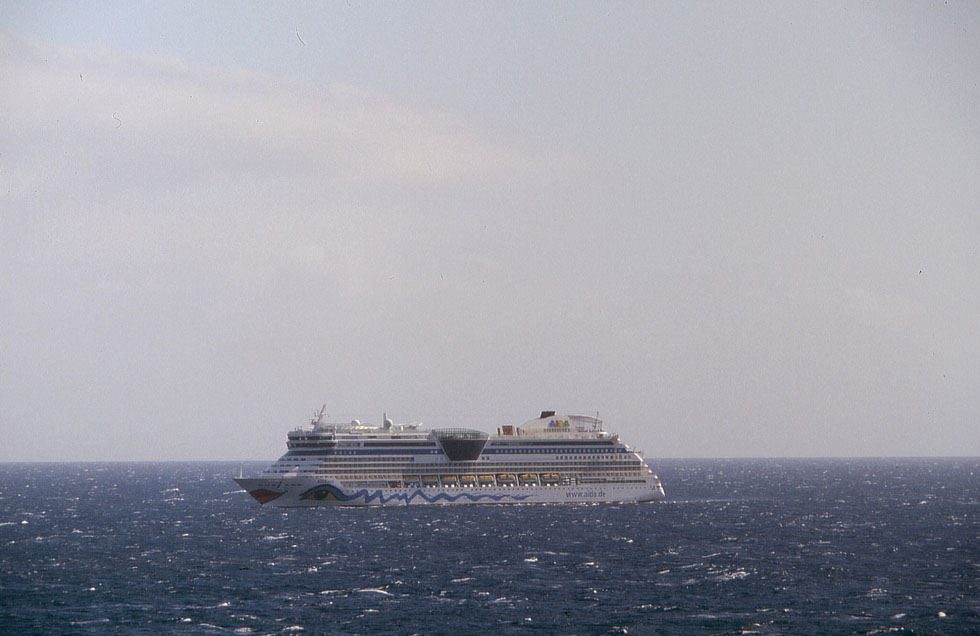
“AIDAluna” approaching Funchal, Madeira, 2010 (WS)
AIDA Cruises
Deutsche Seereederei Touristic initiated in 1996 a new concept of cruises, totally casual, with informal buffet dining as the primary food service. Its first ship was the 38,531 gt newbuild “CS Aida”, CS meaning ‘club ship’. However, it was no initial success. The vessel was sold to Norwegian Cruise Line, chartered back, and in 1999 a 51% majority stake was acquired by P&O. The joint venture became labeled AIDA Cruises, then registered as Seetours, London. The “CS Aida” was renamed “AIDAcara”, joined by the new 42,289-ton “AIDAvita” in 2002 and her sister “AIDAura” in 2003. Their bow is decorated with the lovely kissing mouth, a label designed by Felix Buettner. This fleet has fancifully modern interiors, styled by Partner Ship Design. In 2002 the “A ’Rosa Blu” (70,825 gt, ex “Crown Princess” of Princess Cruises) was added to the Seetours fleet. This uncommon ship, one of the two Renzo Piano-styled vessels, was intended for a “4 to 5-star” clientele, but Douglas Ward awarded her only with a 3 Star Plus classification.
In 2003 the P&O Princess group was sold to the Carnival Corporation and in 2004 AIDA Cruises became the German branch of Carnival. Under the new ownership, a fleet of four new ships was commissioned in Germany, while “AIDAblu” (ex “A’Rosa Blu”) was transferred to Ocean Village. The new 68,500 gt vessels, built by Meyer Werft, are characterized by the glazed “Theatrum” midships, the renowned shows and the beautiful modern interior design. The “AIDAdiva” was delivered in 2007, followed by two sisters and from 2010 by the slightly larger “AIDAblue”.
In April 2007 Ships Monthly had informed: “In December (2006), Carnival signed a letter of intent with the giant TUI group of Germany to develop and operate both AIDA Cruises, already a Carnival subsidiary, and a new TUI Cruise Line, whose first 3,000-passenger ship will enter service in Spring 2010”. The plans however were dropped and in March 2008 TUI’s cooperation with competitor Royal Caribbean was announced (see the relevant chapter).
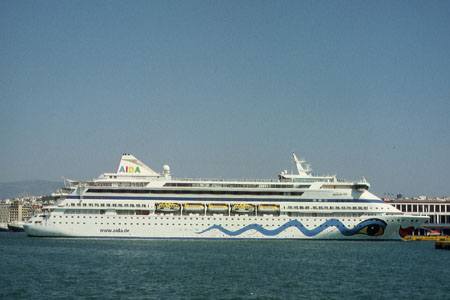
“AIDAvita”, Piraeus 2008 (WS)
|
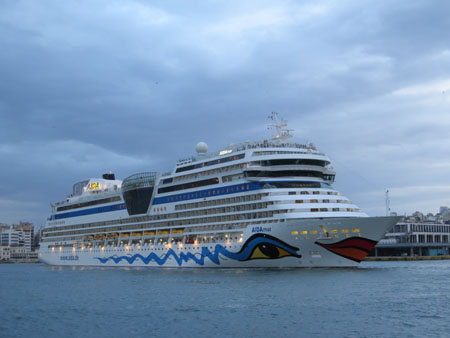
“AIDAmar”, Piraeus 2013 (WS)
|
In the same year the Carnival Corporation ordered for AIDA Cruises two more ships of the 71,000-ton class. That meant a great a great success for this Rostock-based, Italian-flagged brand of Carnival, as the German market is world’s third-largest. In 2011 Lloyds List reported with jealousy the decision to order 2 cruise ships in Japan. A new size appeared in 2015 with this “AIDAprima”, the first megaship built for the Carnival Group by Mitsubishi and the first AIDA ship with pod propulsion and other innovations.
Ships delivered from 2007:
69,000 gt class
Meyer Werft: “AIDAdiva” (2007), “AIDAbella” (2008), “AIDAluna” (2009).
71,000 gt derivatives
Meyer Werft: “AIDAblue” (2010/71,304 gt), “AIDAsol” (2011), “AIDAmar” (2012), “AIDAstella” (2013).
125,000 gt class
Mitsubishi Heavy Industries, pods: “AIDAprima” (2015/124,500 gt), “AIDA…” (2016).
Ibero Cruceros
In answer to Royal Caribbean’s acquisition of Pullmantur, the Carnival Corporation acquired in 2007 a 75% shareholding in Iberostar Cruises (according to Berlitz Guide), a subsidiary of Iberostar, one of Spain’s largest tourist enterprises, which had founded in 1998 Iberworld Airlines. Ships Monthly (April 2007) listed Iberojet Cruises, the fleet consisting of two vessels, the 30-knot “Grand Voyager” (2000/ 24,391 gt, ex “Olympic Voyager” of Royal Olympic Cruises), chartered in 2004, and the “Grand Mistral” (1999/ 47,226 gt, ex “Mistral” of Festival Cruises), taken over in 2005. Iberojet was put under Costa management (while former Iberojet executives started Vision Cruceros in Spain, closed down however in 2009). Older Carnival ships were transferred to the subsidiary with the new label Ibero Cruceros.
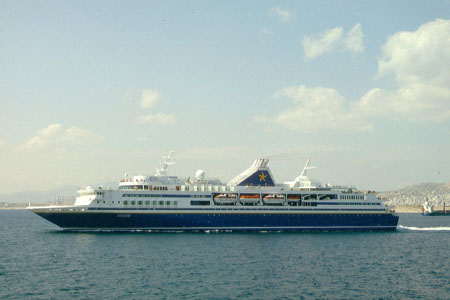
“Voyager” of Iberostar Cruises, then “Grand Voyager”, Piraeus 2005 (WS)
|
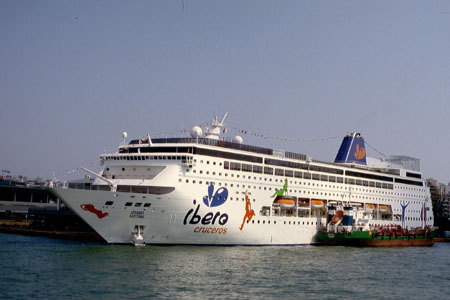
“Grand Mistral” of Ibero Cruceros, Piraeus 2009 (WS)
|
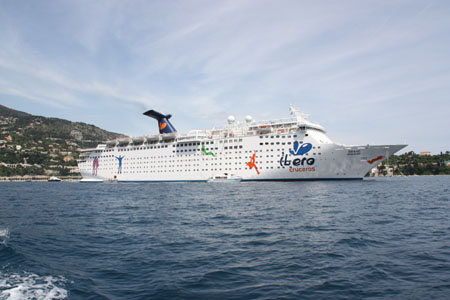
“Grand Holiday” of Ibero Cruceros, ex “Holiday” of Carnival, Villefranche-sur-Mer, 2013 (Anton Soelch)
|
|
|